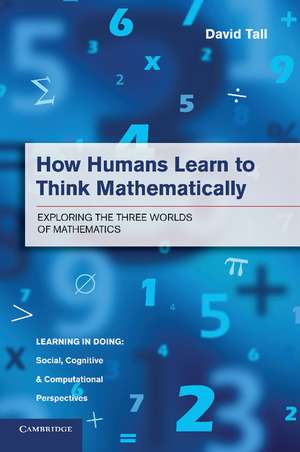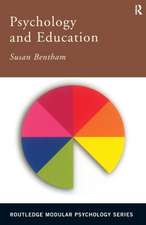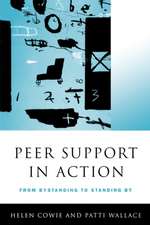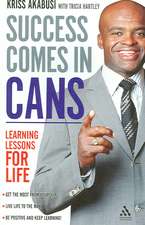How Humans Learn to Think Mathematically: Exploring the Three Worlds of Mathematics: Learning in Doing: Social, Cognitive and Computational Perspectives
Autor David Tallen Limba Engleză Paperback – sep 2013
| Toate formatele și edițiile | Preț | Express |
|---|---|---|
| Paperback (1) | 345.73 lei 43-57 zile | |
| Cambridge University Press – sep 2013 | 345.73 lei 43-57 zile | |
| Hardback (1) | 681.29 lei 43-57 zile | |
| Cambridge University Press – sep 2013 | 681.29 lei 43-57 zile |
Din seria Learning in Doing: Social, Cognitive and Computational Perspectives
-
 Preț: 311.66 lei
Preț: 311.66 lei - 9%
 Preț: 695.96 lei
Preț: 695.96 lei -
 Preț: 319.43 lei
Preț: 319.43 lei -
 Preț: 228.66 lei
Preț: 228.66 lei -
 Preț: 201.39 lei
Preț: 201.39 lei - 11%
 Preț: 493.04 lei
Preț: 493.04 lei -
 Preț: 281.88 lei
Preț: 281.88 lei -
 Preț: 431.40 lei
Preț: 431.40 lei - 14%
 Preț: 900.82 lei
Preț: 900.82 lei -
 Preț: 326.53 lei
Preț: 326.53 lei -
 Preț: 346.50 lei
Preț: 346.50 lei -
 Preț: 296.65 lei
Preț: 296.65 lei -
 Preț: 292.45 lei
Preț: 292.45 lei - 20%
 Preț: 279.91 lei
Preț: 279.91 lei - 11%
 Preț: 459.10 lei
Preț: 459.10 lei -
 Preț: 357.13 lei
Preț: 357.13 lei - 11%
 Preț: 526.58 lei
Preț: 526.58 lei - 14%
 Preț: 784.65 lei
Preț: 784.65 lei -
 Preț: 320.66 lei
Preț: 320.66 lei - 11%
 Preț: 512.98 lei
Preț: 512.98 lei -
 Preț: 332.97 lei
Preț: 332.97 lei - 11%
 Preț: 690.80 lei
Preț: 690.80 lei - 11%
 Preț: 444.70 lei
Preț: 444.70 lei -
 Preț: 324.15 lei
Preț: 324.15 lei -
 Preț: 350.97 lei
Preț: 350.97 lei -
 Preț: 392.00 lei
Preț: 392.00 lei - 20%
 Preț: 516.51 lei
Preț: 516.51 lei -
 Preț: 330.33 lei
Preț: 330.33 lei - 14%
 Preț: 786.15 lei
Preț: 786.15 lei - 5%
 Preț: 321.87 lei
Preț: 321.87 lei -
 Preț: 350.21 lei
Preț: 350.21 lei -
 Preț: 321.27 lei
Preț: 321.27 lei - 14%
 Preț: 726.60 lei
Preț: 726.60 lei -
 Preț: 339.96 lei
Preț: 339.96 lei
Preț: 345.73 lei
Nou
Puncte Express: 519
Preț estimativ în valută:
66.15€ • 69.26$ • 54.74£
66.15€ • 69.26$ • 54.74£
Carte tipărită la comandă
Livrare economică 07-21 aprilie
Preluare comenzi: 021 569.72.76
Specificații
ISBN-13: 9781107668546
ISBN-10: 1107668549
Pagini: 484
Ilustrații: 175 b/w illus. 4 tables
Dimensiuni: 152 x 229 x 28 mm
Greutate: 0.64 kg
Ediția:New.
Editura: Cambridge University Press
Colecția Cambridge University Press
Seria Learning in Doing: Social, Cognitive and Computational Perspectives
Locul publicării:New York, United States
ISBN-10: 1107668549
Pagini: 484
Ilustrații: 175 b/w illus. 4 tables
Dimensiuni: 152 x 229 x 28 mm
Greutate: 0.64 kg
Ediția:New.
Editura: Cambridge University Press
Colecția Cambridge University Press
Seria Learning in Doing: Social, Cognitive and Computational Perspectives
Locul publicării:New York, United States
Cuprins
Part I. Prelude: 1. About this book; Part II. School Mathematics and its Consequences: 2. The foundations of mathematical thinking; 3. Compression, connection and blending of mathematical ideas; 4. Set-befores, met-befores and long-term learning; 5. Mathematics and the emotions; 6. The three worlds of mathematics; 7. Journeys through embodiment and symbolism; 8. Problem-solving and proof; Part III. Interlude: 9. The historical evolution of mathematics; Part IV. University Mathematics and Beyond: 10. The transition to formal knowledge; 11. Blending knowledge structures in calculus; 12. Expert thinking and structure theorems; 13. Contemplating the infinitely large and the infinitely small; 14. Expanding frontiers through mathematical research; 15. Reflections; Appendix: where the ideas came from.
Notă biografică
Descriere
How Humans Learn to Think Mathematically describes the development of mathematical thinking from the young child to the sophisticated adult.












